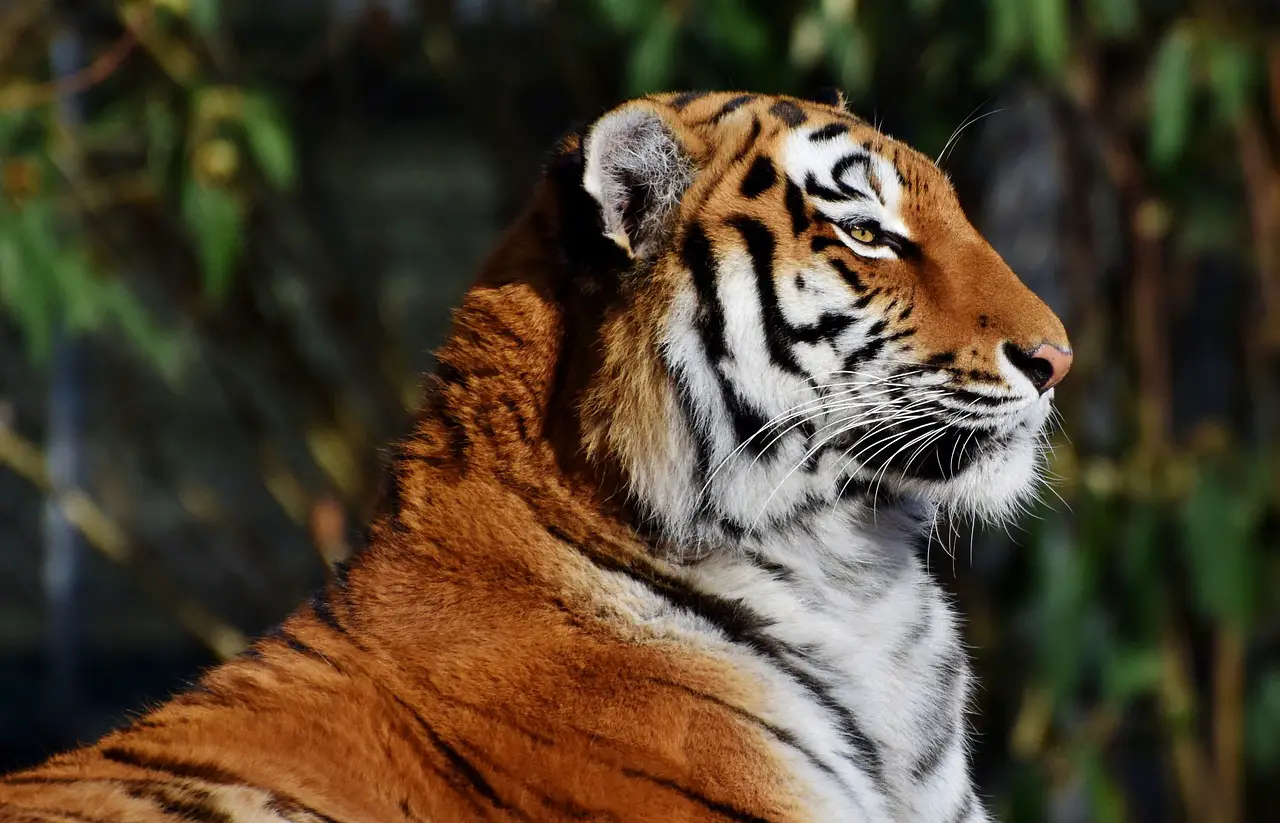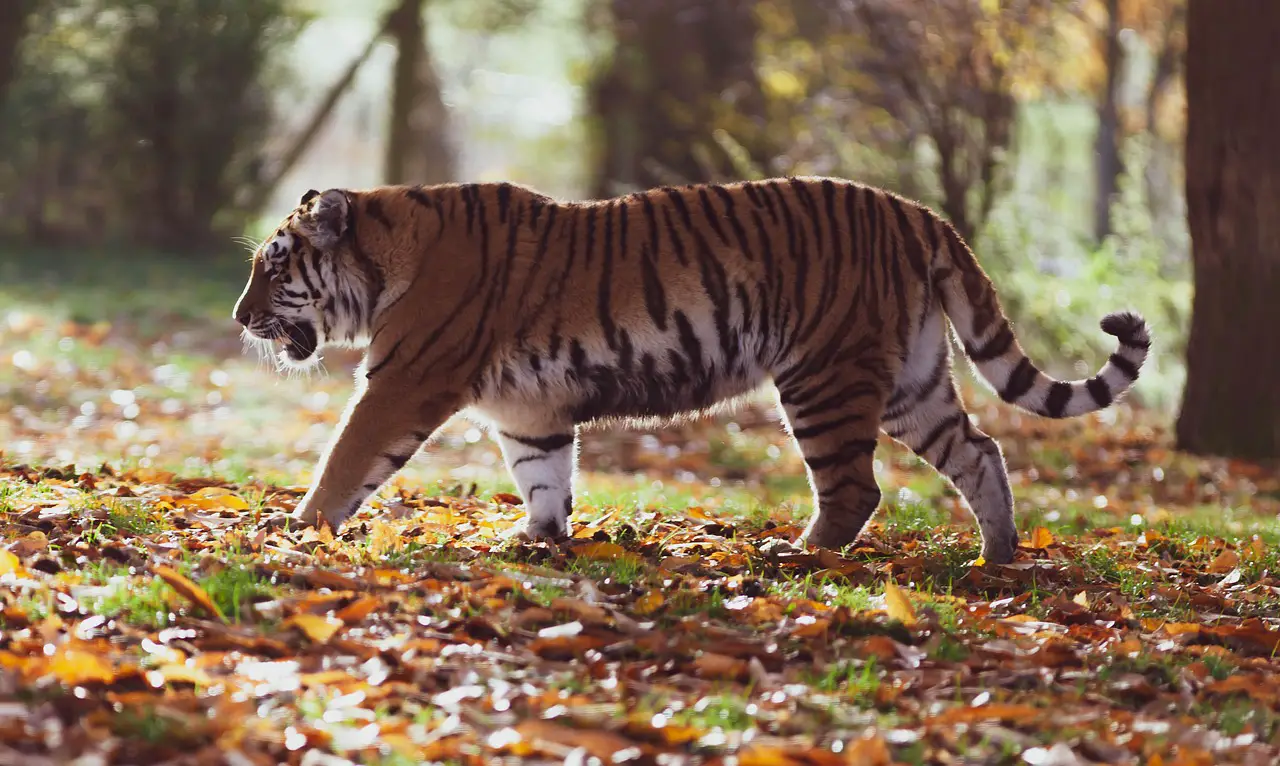Tigers, with their majestic appearance and fearsome reputation, hold a prominent place in the animal kingdom. As apex predators, they reign over their ecosystems, playing a critical role in maintaining the delicate balance of nature. But while tigers are feared by many, what exactly do they fear?
What eats tigers, if anything? In this article, we will delve into the world of tiger predation, exploring their dietary habits and understanding the factors that shape their food choices.
You may also want to know if tigers are stronger than lions.
Tiger Diet in the Wild
In the wild, tigers are primarily carnivorous, meaning their diet consists of meat. These magnificent felines are opportunistic hunters and have evolved to consume a diverse range of prey species. Their diet varies based on factors such as geographic location and prey availability, but their culinary preferences predominantly include ungulates, or hoofed animals.
What Eats Tigers? Tigers as Apex Predators
As apex predators, tigers hold a unique position in their ecosystems. With no natural predators of their own, they sit confidently at the top of the food chain. This status gives them the freedom to choose from a variety of prey species, making them one of the most adaptable and successful predators in the animal kingdom.

Prey Selection and Hunting Strategies
Tigers are skilled hunters, relying on a combination of stealth, strength, and strategy to secure their meals. They carefully select their prey based on factors such as size, vulnerability, and availability. Their hunting strategies are precise, with the element of surprise often playing a crucial role in their successful hunts.
Large Prey
Tigers are famous for their ability to take down large and formidable prey, such as deer and wild boar. These animals provide a substantial amount of sustenance for the tiger and, in some cases, can feed them for several days. However, hunting larger prey comes with risks and challenges, as these animals can be fierce opponents.
Medium Prey
In addition to large prey, tigers also target medium-sized animals, including monkeys and wild dogs. These prey species offer a valuable source of food, contributing to the tiger’s balanced diet. Such diversity in prey selection ensures that tigers can survive even when larger game is scarce.
Small Prey
Despite their reputation as formidable predators, tigers do not overlook smaller prey. Birds and rodents also form part of their diet, providing them with essential nutrients and filling the gaps when larger prey is not readily available.
Territorial Behavior and Feeding Habits
Territorial behavior plays a significant role in the tiger’s feeding habits. Tigers establish and fiercely defend their territories, which serve as exclusive hunting grounds. Their territory provides a reliable food source, and they carefully manage and protect it to sustain their survival.

Scavenging Behavior
While tigers are highly skilled hunters, they are not averse to scavenging for food when the opportunity arises. Scavenging behavior occurs when tigers come across carrion or the remains of other animals. This behavior allows them to conserve energy and ensures they have access to food during lean times.
Interactions with Other Predators
Despite their position as apex predators, tigers do face competition from other carnivores within their ecosystems. Interactions with other predators can sometimes lead to conflicts over food resources, as each species vies for survival in their respective territories.
Human-Tiger Conflict
Human-tiger conflict is a pressing issue in areas where human settlements overlap with tiger habitats. Tigers may occasionally prey on livestock, leading to conflicts with local communities. Addressing these conflicts is crucial for ensuring the conservation of both tigers and the livelihoods of local residents.
Conservation Challenges
While tigers have adapted to thrive as apex predators, they face significant conservation challenges due to their dietary needs. Habitat loss and human disturbances impact the availability of prey species, making it crucial to preserve both tigers and their prey for ecosystem balance.
Human Impact on Tiger Prey
Human activities, such as poaching and habitat destruction, can profoundly affect prey populations. When prey species decline, it directly impacts tigers, leading to food scarcity and potential conflict with humans.
Natural Threats to Tigers
Apart from human-induced threats, tigers also face challenges from natural factors, including disease, injury, and competition with other predators. Understanding these threats can shed light on the complex relationship between tigers and their prey.
Conclusion
What Eats Tigers? Tigers, as apex predators, hold a crucial role in maintaining ecological balance. Their dietary habits, which encompass a diverse range of prey species, ensure their adaptability and survival. As we strive to preserve these magnificent creatures and their habitats, we must also recognize the importance of protecting their prey species. Only by safeguarding both tigers and their prey can we secure the delicate harmony of the ecosystems they inhabit.
FAQs:
1. Do tigers have any natural predators?
- No, tigers do not have any natural predators. They are apex predators, meaning they sit at the top of the food chain.
2. What are the primary prey species of tigers?
- Tigers primarily prey on ungulates, such as deer and wild boar. They also target medium-sized animals like monkeys and wild dogs and occasionally consume smaller prey like birds and rodents.
3. Do tigers scavenge for food?
- Yes, tigers are known to scavenge for food when the opportunity arises. Scavenging behavior allows them to conserve energy and access food during lean times.
4. How do human activities impact tiger prey populations?
- Human activities, such as poaching and habitat destruction, can lead to a decline in prey populations. This, in turn, affects tigers’ access to food and can result in conflicts with humans.
5. Why is preserving both tigers and their prey important for conservation?
- Preserving both tigers and their prey is essential for maintaining ecological balance. Tigers play a crucial role in regulating prey populations, and the abundance of prey ensures the survival of tigers in their natural habitats.
